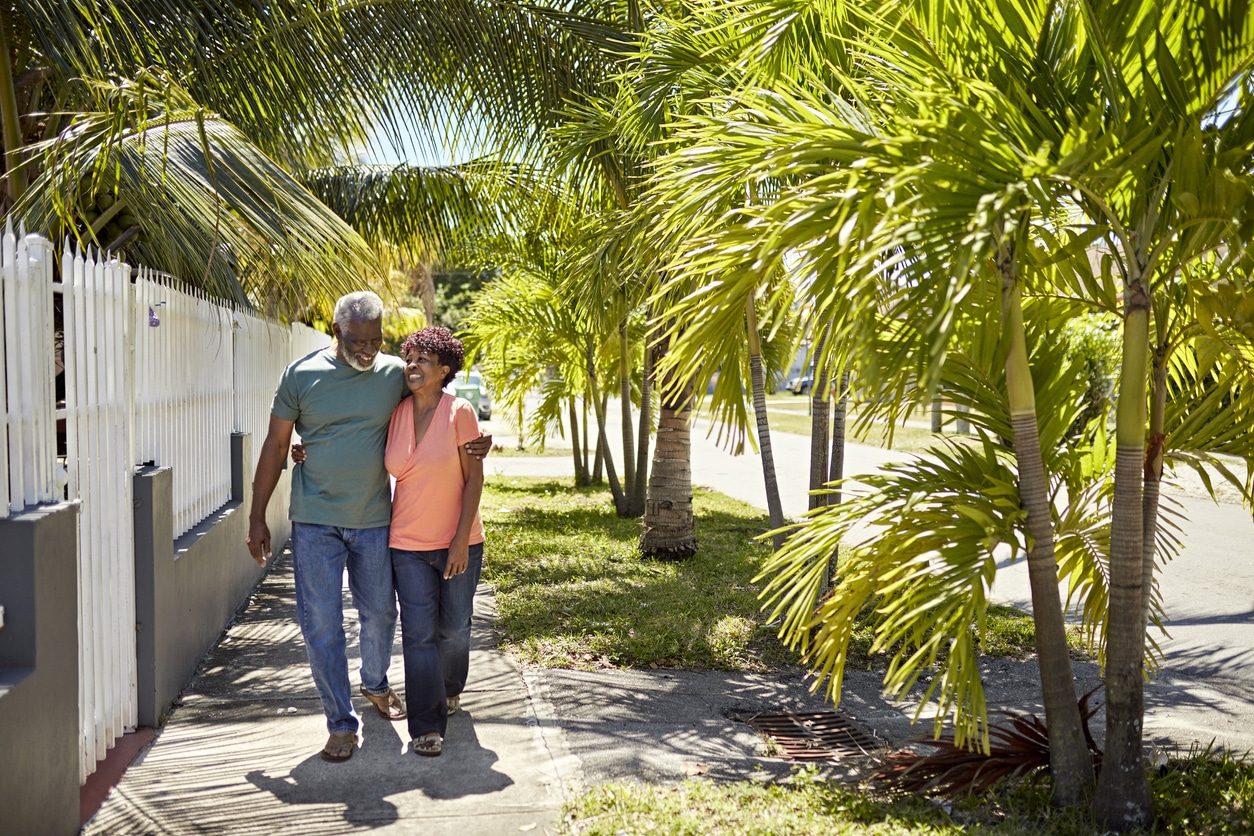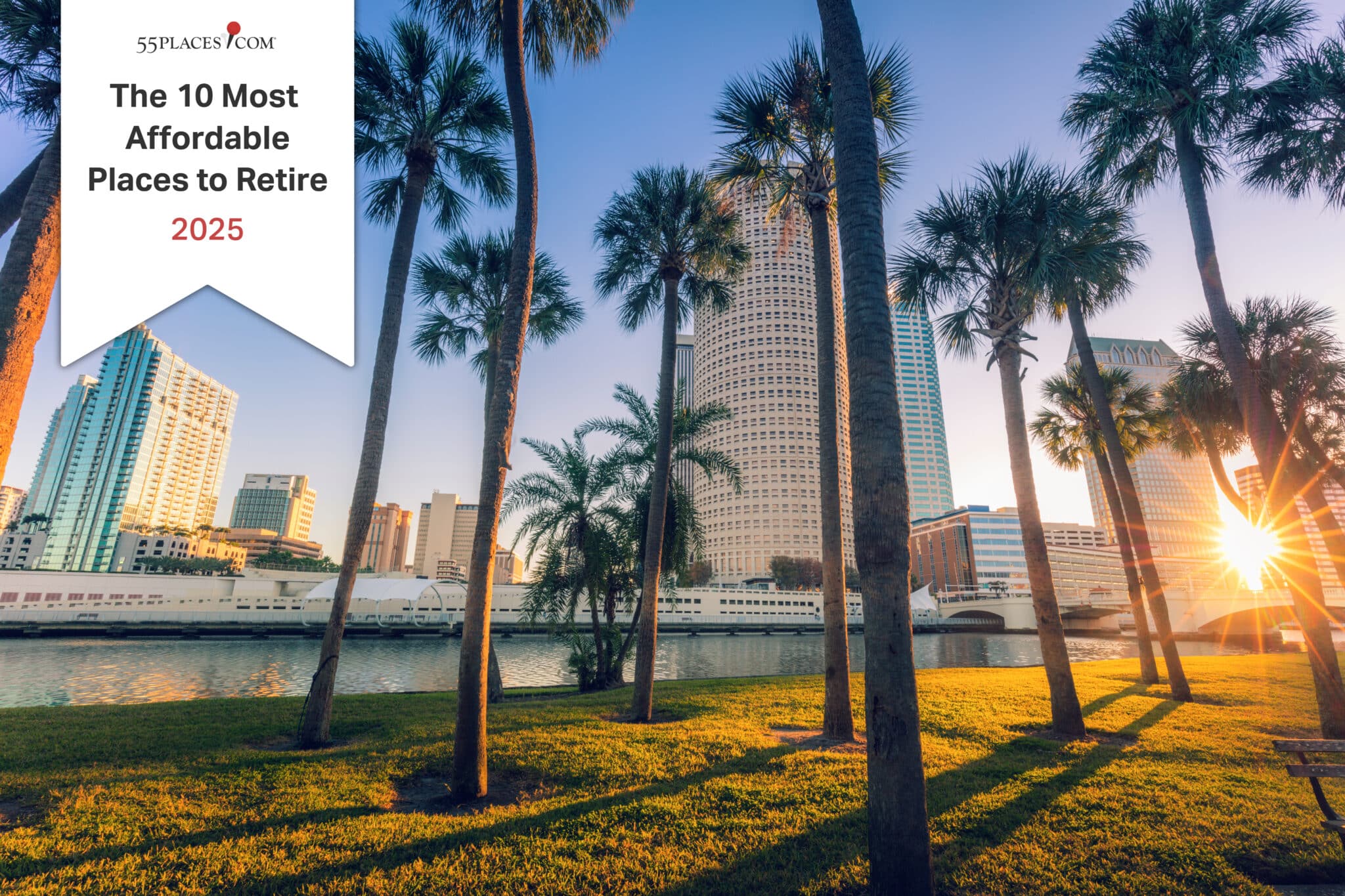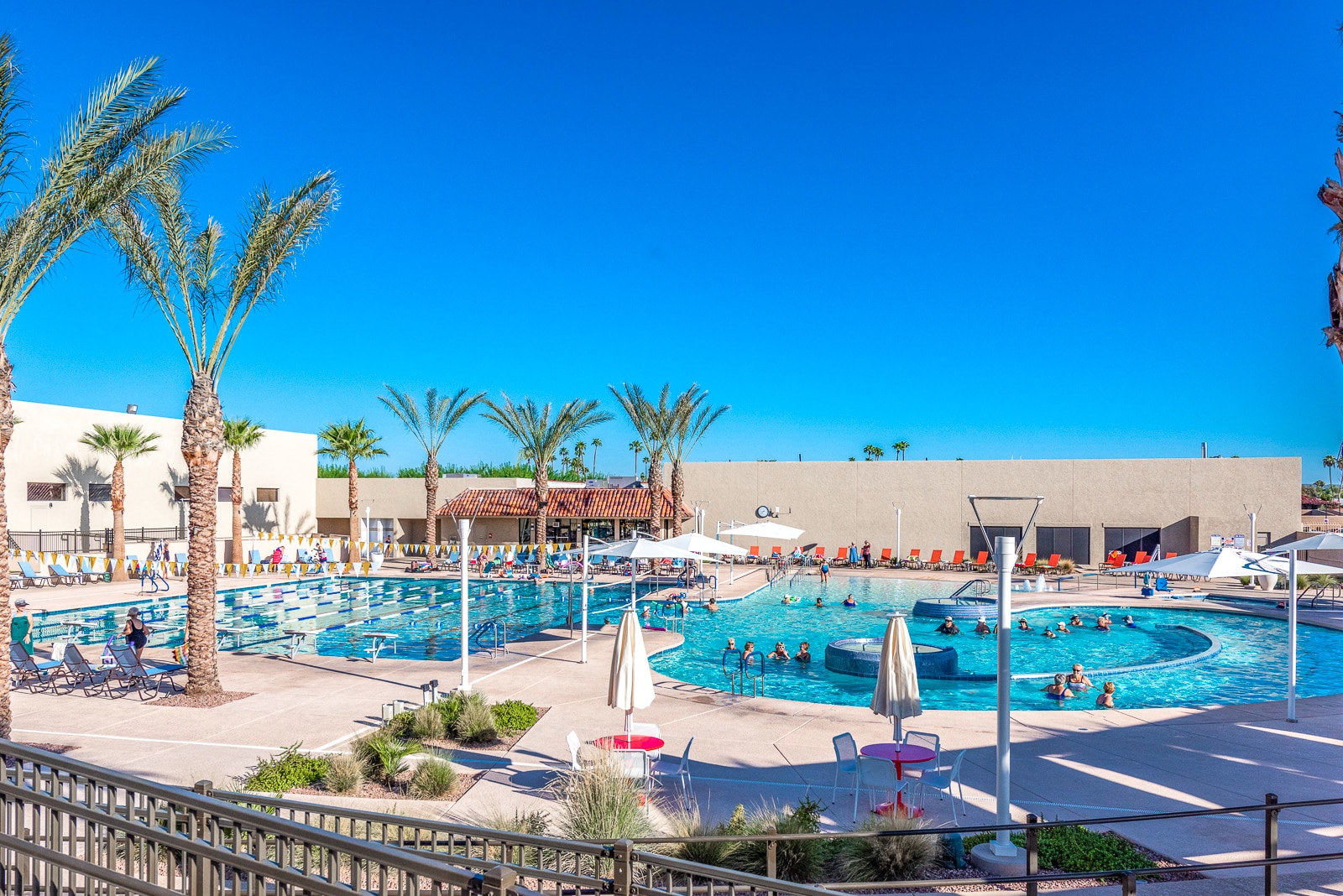Sunshine, world-class active adult communities, and the absence of a state income tax have long made Florida one of the most popular retirement destinations in the country. Still, many retirees hesitate because of the state’s biggest drawback: hurricanes. The good news is that you can still enjoy everything the Sunshine State has to offer while minimizing storm risks by choosing the best places to retire in Florida without hurricanes.
For those looking to avoid the brunt of hurricane damage, Central Florida is often the safest bet. The region offers a variety of cities and towns where active adults can enjoy the Florida lifestyle with greater peace of mind.
Clermont
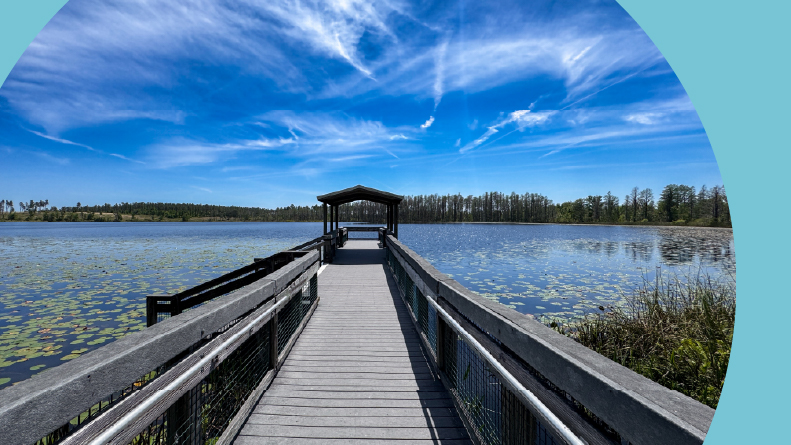
Elevation: 141 Feet
Population: 50,851
You don’t have to give up life by the water if you live in Clermont. The largest city in Lake County, it’s home to recreational lakes and gently rolling hills. That same geography, including its inland location, helps Clermont avoid hurricane high water. Also, Clermont is arguably the state’s best wine country. While this small and growing city has plenty to keep you busy, it’s only 30 miles west of exciting Orlando.
Recommended 55+ Communities in Clermont
Gainesville
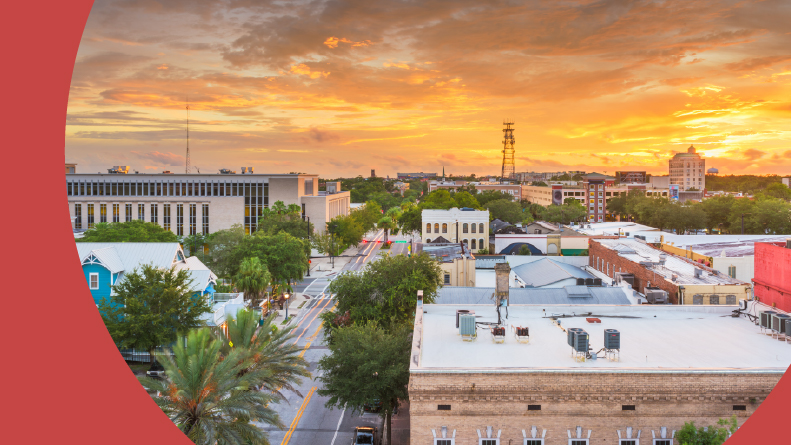
Elevation: 152 Feet
Population: 148,720
Regarded as the cultural hub of the state’s central region, Gainesville is home to the University of Florida and its associated museums and galleries. Catch a Gators game, or explore downtown—a charming, walkable district with plenty of things to do amid a vibrant atmosphere. Also, the Malcom Randall Department of Veterans Affairs Medical Center is in Gainesville, among other quality health care providers.
But what puts Gainesville at a lower risk from hurricane damage? It has a well-designed groundwater management system that reduces rainwater flooding by manipulating water levels in the nearby Johns and Suwannee rivers.
Lake City
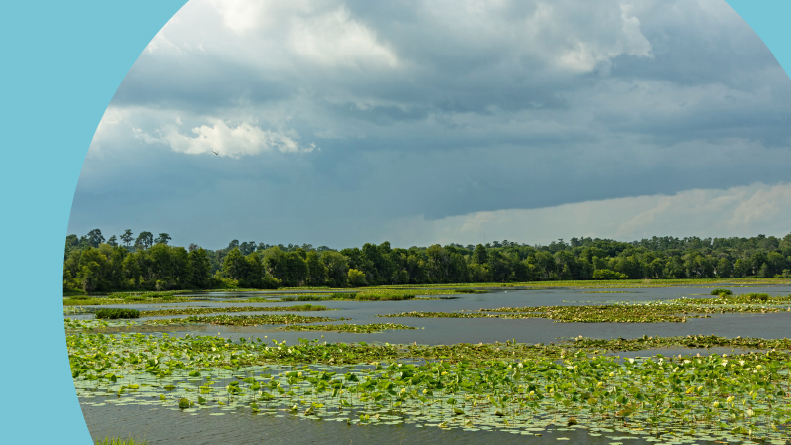
Elevation: 187 Feet
Population: 12,783
We can’t leave out Lake City for hurricane safety. Its advantages are purely geographical. The city is situated at a relatively high elevation and is tucked away in an inland location that rarely experiences the full force of hurricanes.
The “Gateway to Florida,” Lake City is the northernmost city in our list; Columbia County sits on the Georgia border. Lake City is a casual, laid-back town renowned for its Civil War history, charming shops along Marion Street, and its lakes and nature preserves. Also, cave systems in large natural springs attract SCUBA divers from around the world. It’s an affordable place to live, with the cost of living at 11% lower than the national average and 19% lower than the state average.
Leesburg
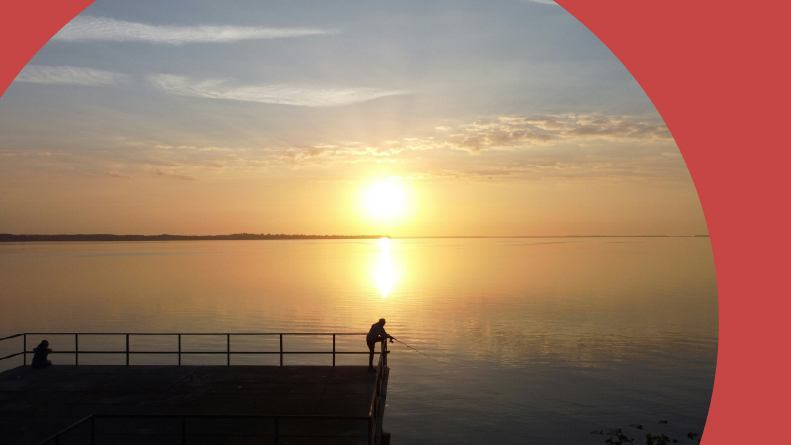
Elevation: 89 Feet
Population: 37,815
In a state in which many cities have lost their historic charm due to hurricane damage, Leesburg has persevered. Explore a main street-style downtown that celebrates its 18th- and 19th-century architecture while also enjoying the amenities of modern suburban living.
This is a rapidly growing city, but long-time residents are welcoming to newcomers. Popular local events and activities help forge new friendships, as do the numerous cafes and breweries. All of this for a low cost of living as compared to both state and national averages.
Recommended 55+ Communities in Leesburg
- Arlington Ridge
- Highland Lakes
- Legacy of Leesburg
- Pennbrooke Fairways
- Plantation at Leesburg
- Royal Highlands
- Scottish Highlands
Ocala
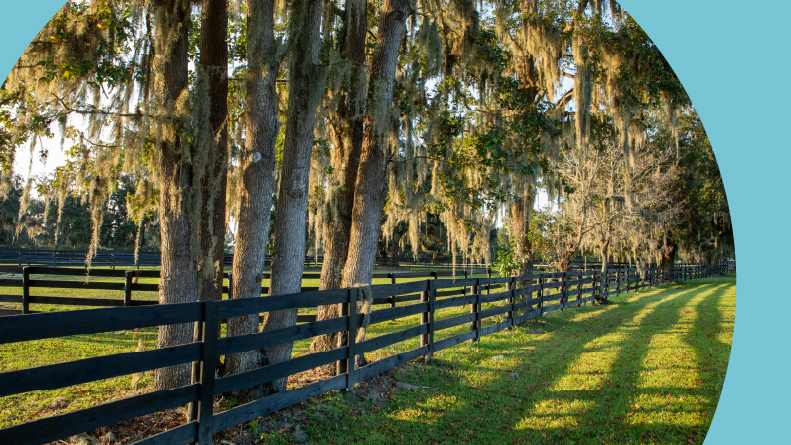
Elevation: 69 Feet
Population: 70,251
Ocala has a history of resilience. On Thanksgiving Day in 1883, a fire destroyed the city. It was rebuilt using non-flammable materials like brick, stone, and steel. It also has an excellent flood control system. As a result, FEMA’s Community Rating System Discount program allows residents to benefit from a significant discount on their homeowner’s insurance.
“Brick City,” as it’s nicknamed, has a close-knit community for its size. Residents enjoy all the amenities of a larger metropolitan area, and Silver Springs State Park is Ocala’s playground with access to wildlife viewing, kayaking on crystal-clear waters, and easy nature trails. There are also plenty of golfing opportunities nearby, and it’s a haven for horse lovers with its many farms and the enormous World Equestrian Center. If you’re looking for an age-restricted community, you’ll find quite a few in and around Ocala.
Recommended 55+ Communities in Ocala
- Cherrywood
- El Dorado
- JB Ranch
- Liberty Village
- Majestic Oaks Ocala
- Marco Polo Village
- Marion Landing
- Stone Creek
- Oak Run
- Ocala Palms
- Ocala Preserve
- On Top of the World
- Palm Cay
- Pine Run Estates
- Quail Meadow
- Spruce Creek North
- Stone Creek
- SummerGlen
Orlando
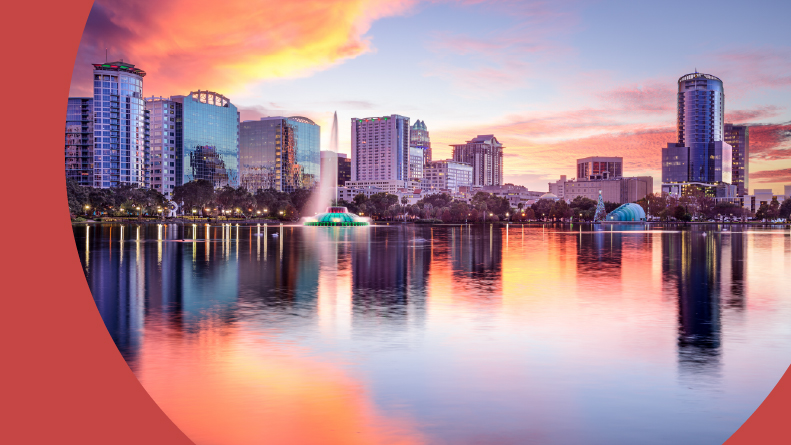
Elevation: 112 Feet
Population: 334,854
There’s a good reason why Orlando is home to the most famous theme parks in the country: It’s centrally located and well above ground. The city of Orlando, as well as Orange County, has set up excellent floodwater management infrastructure, and there’s a big push to get residents involved in keeping neighborhood storm drains cleared.
As with Ocala, Orlando residents have the opportunity to participate in FEMA’s Community Rating System Discount program. There’s more to Orlando than the mouse! As a major metropolitan hub, you’ll find cultural activities and events, and excellent dining opportunities. The shopping is fantastic here, whether you go to the enormous Florida Mall or the upscale Mall at Millennia.
Recommended 55+ Communities in Orlando
Let 55places Help You Find Your Ideal Active Adult Community
It should go without saying that hurricanes are, despite modern technology and weather modelling, unpredictable. No Florida city is immune to the effects of Mother Nature, but if you want to minimize the risk and maximize the benefits of Florida living, we invite you to explore communities in these inland locations.
No matter where you decide to start your real estate search, you want 55+ community specialists on your team. Our seasoned real estate agents provide the insights and experience you need to find the retirement destination that matches your lifestyle. Contact 55places.com today!
Retiring in Florida Without Hurricanes: FAQ
1. Is it possible to retire in Florida without hurricanes?
No area is completely hurricane-proof, but inland Central and Northern Florida cities like Ocala, Gainesville, Lake City, Clermont, and Leesburg have a much lower risk than coastal regions.
2. What part of Florida is least affected by hurricanes?
Central Florida (particularly areas around Orlando, Ocala, and Gainesville) tends to experience fewer direct hits and less storm surge compared to coastal areas.
3. What city in Florida has the lowest hurricane risk?
Gainesville is often ranked among the safest because of its inland location, elevation, and strong floodwater management system.
4. Does Orlando get hurricanes?
Yes, Orlando can still experience tropical storms, but its inland location and flood-prevention infrastructure make it far less vulnerable than coastal cities.
5. Are Florida’s inland cities more affordable than coastal ones?
Yes. Inland retirement destinations like Ocala, Leesburg, and Lake City generally have a lower cost of living and more affordable housing than beach towns.
6. Do inland cities still get hurricane winds?
Yes, strong winds can travel inland, but without the added risk of storm surge and coastal flooding, damage is typically less severe.
7. What elevation is considered safe from storm surge in Florida?
Cities at 80–150 feet above sea level, like Clermont (141 feet) and Lake City (187 feet), are much safer from storm surge flooding than low-lying coastal areas.
8. Do hurricane-safe Florida cities still have 55+ communities?
Yes. Cities like Ocala, Leesburg, Clermont, and Orlando have dozens of active adult communities with resort-style amenities.
9. Do inland Florida homeowners still need flood insurance?
Some do, depending on location. Even inland, heavy rain can cause localized flooding, though premiums are often much lower than in coastal areas.
10. Which Florida inland cities are most popular for retirees?
Ocala, Orlando, Leesburg, Clermont, Lake City, and Gainesville are top inland retirement spots with lower hurricane risk.

